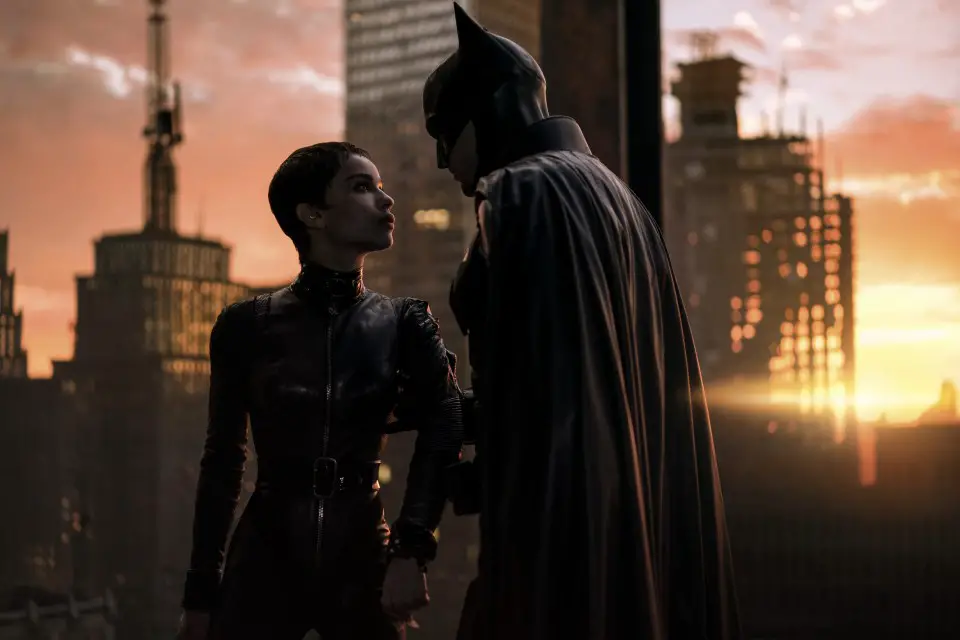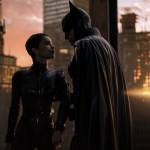‘The Batman’s Third Act Is Actually Great

The Batman is a hit. With almost $500M at the global box office alongside overwhelmingly positive critic and audience approval scores, fans around the world are clearly responding to Matt Reeves’ moody, “Year Two” update on the world’s greatest detective. Not everyone has Bat-fever, though, and even the ones who do have shared some of the same critiques, particularly regarding the film’s third act.
In its climax, Riddler reveals his final gambit – flooding the city and herding its citizens to Gotham Square Garden. There, dozens of radicalized Riddler followers are waiting with rifles in the rafters. (Admittedly, it’s a disturbing parallel to this country’s painful history with mass shootings.)
Batman defeats Riddler’s goons but not before undergoing severe physical trauma. He then risks his life to save countless lives from being electrocuted by a live wire below. Bruce survives and is baptized in the water, reborn as a figure of light leading the city out of the shadows. What’s more, Bruce reckons with the unintended effect of his crusade. He realizes the involuntary, if not direct, role Batman played in creating the conditions that led to this disaster.
Sounds pretty strong, right? I thought so, too, although the most common criticism has been that it’s unnecessary and overlong. Many have cited Riddler’s actual capture at the end of the second act as a more natural conclusion. Some have also called it a jarring detour from the prior two hours, which rooted the film in a grounded, neo-noir mystery.
READ: ‘The Batman’ Spoiler Review: “An Epic Crime Thriller”
While those points are valid, they represent a limited view that only considers plot, not character or theme. Bruce’s arc remains incomplete until the finale. He locks Riddler up – certainly his most challenging trial yet – but hasn’t materially changed anything about Gotham or his relationship to it. If anything he’s made things worse, encouraging more troubled, suggestible minds like Riddler and his followers to co-opt Batman’s pursuit of vigilante justice. Fear may be a tool, but it’s also a blunt instrument. And in Gotham, when combined with “a little focused violence” – as Riddler puts it – by those with less virtuous intentions, the result is catastrophic.
Even Bruce suspects his “Gotham Project” isn’t really working. He reflects on this during his opening monologue: “I wish I could say I’m making a difference, but I don’t know. Murder, robberies, assault – 2 years later, they’re all up.” Shortly after discovering Riddler’s first victim in the first act, Alfred challenges Bruce’s self-destructive tendencies. Bruce responds, “I don’t care what happens to me.” He also doesn’t care what happens to anyone else, let alone Gotham. Not really. Not yet. He sees the worst in its people as Selina observes later in the film.
In response, the whole city fears him, not just the criminal element. Bruce may tell himself he’s fighting for his family’s legacy, but he’s really fighting his unresolved trauma. To become something greater, Bruce needs to choose Gotham over his self-righteous campaign. That development doesn’t happen if the story ends at a more convenient point before the third act. If it does, Bruce goes back on the street exacting vengeance on low-level criminals, reliving the night his parents died in a Westworldian loop of suffering. How long before fear is insufficient and he breaks his one rule?
READ: What I Want To See In ‘The Batman’ Sequel
It’s only by confronting the madness Batman has inspired – hearing the distortion of his words “I’m vengeance” – that Bruce truly understands the limits of his crusade and what the city really needs: hope. Moreover, it’s what Bruce needs to heal and break the cycle of violence in his own life. Trauma in recent media, particularly big franchises, has become diluted to lazy marketing soundbites to impart greater importance. Here, Reeves and Pattinson beautifully explore its transformative power. How our scars “can give us the power to endure, and the strength to fight.” In the process, they find new depth to nearly a century’s worth of mythology.
As Bruce delivers his final monologue, the accompanying images are among the most powerful ever committed to a superhero film. Bruce, no longer a nocturnal animal and finally accepted by Gotham as its guardian, chooses to protect rather than punish. The sun rises on a ravaged but transformed Gotham, determined to restore faith in its people and institutions. It all leads to one final, quintessential Batman choice: leave town with Selina or stay behind. Things will get worse before they get better. But now Bruce believes the city can change.
The Bat-signal scorches the sky; he’s already spoken for.



